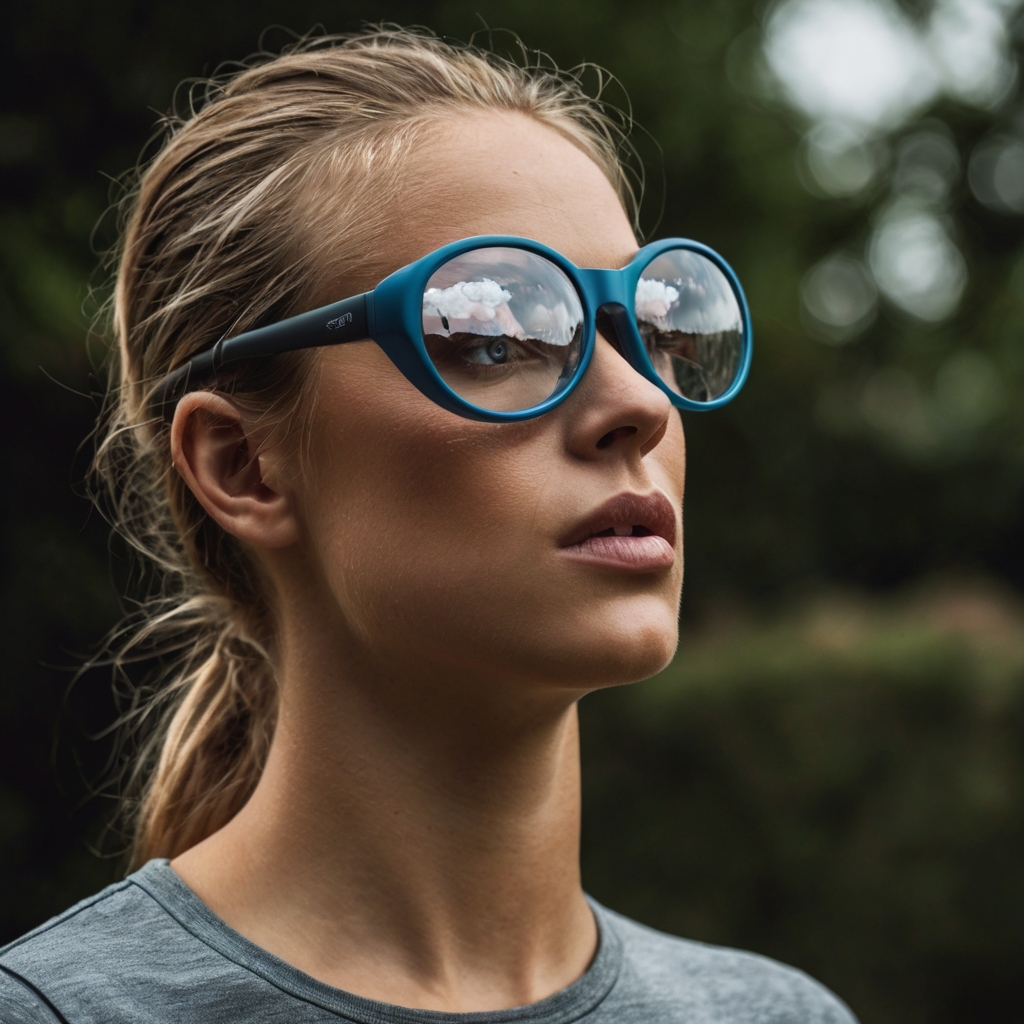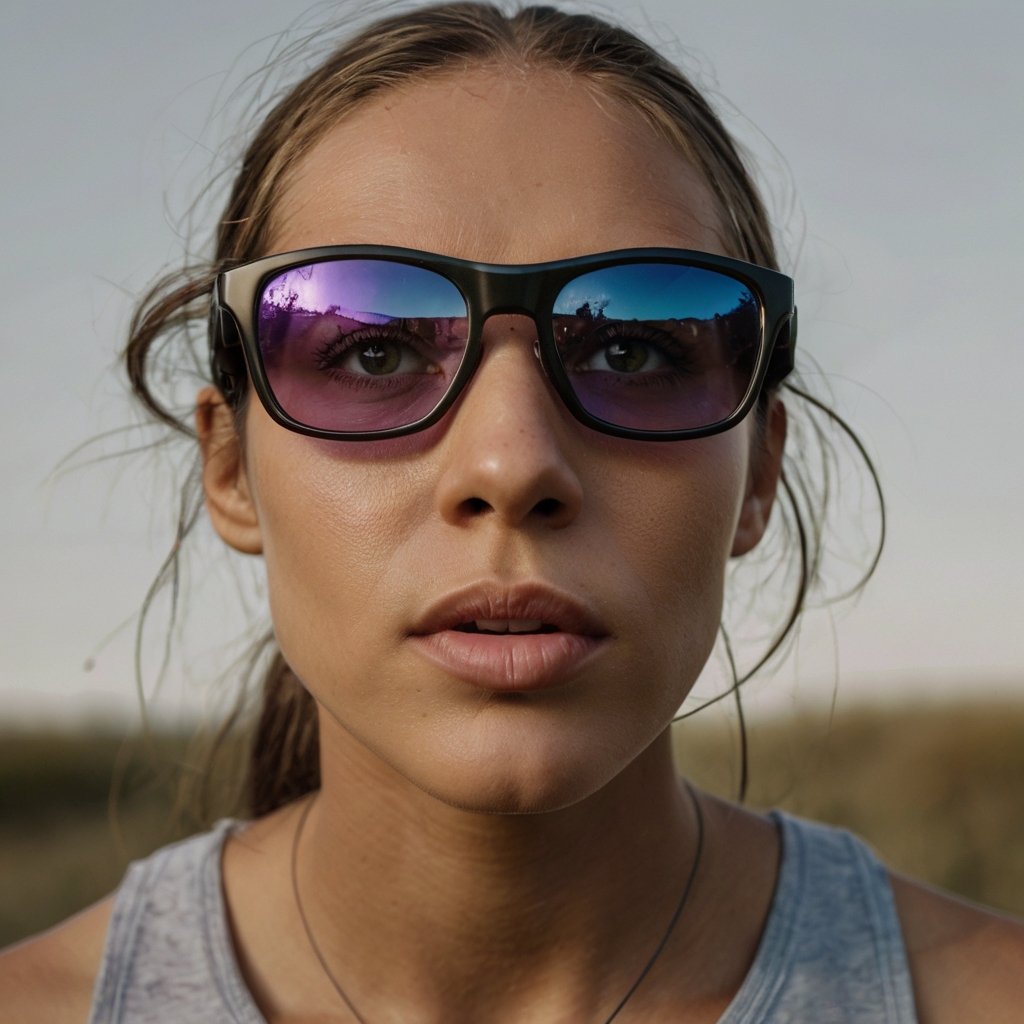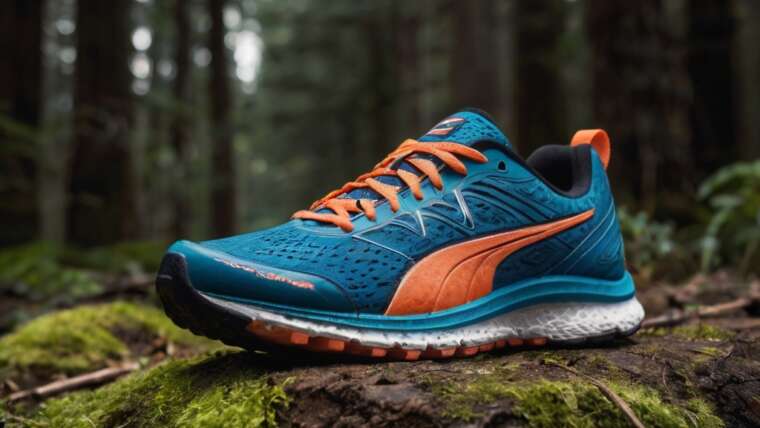Running glasses serve as more than just a style statement for athletes on the pavement or trail. Some runners think of them as fashion accessories, while others see them as vital protective gear. These specialized sunglasses guard your eyes from harmful UV rays and reduce squinting. They also minimize eye strain and protect your eyes from branches and other trail obstacles.
The best running sunglasses come in two main types. You’ll find technical wraparound models built for serious performance, and lifestyle pairs that work well during runs but look natural in daily life. As you choose sunglasses for running, key factors include lens type, cost, and how well they fit different face sizes. Oakley running glasses lead the pack in professional circles, but you’ll find quality options at different price points. On top of that, specialized features like prescription lenses and photochromic technology give runners with specific vision needs exactly what they need. The right pair for you depends on your face shape, priorities, and where you run.

Table of Contents
- 1 Top Types of Running Glasses You Should Know
- 2 What Makes a Good Pair of Running Glasses?
- 3 Polarized vs Non-Polarized: What Runners Need to Know
- 4 How to Choose the Right Fit for Your Face
- 5 Pro Tips from the Field: What Athletes Actually Use
- 6 Summing all up
- 7 Here are some FAQs about running glasses:
- 7.1 What’s the point of running glasses?
- 7.2 What glasses are good for running?
- 7.3 What’s so special about running glasses?
- 7.4 Is it okay to wear glasses when running?
- 7.5 Why do Olympic runners wear those glasses?
- 7.6 What’s the difference between running glasses and regular glasses?
- 7.7 How to choose running glasses?
- 7.8 Are there prescription running glasses?
- 7.9 Is it better to run without glasses?
Top Types of Running Glasses You Should Know
Runners need to know the main types of running glasses to pick the right pair. Each style has its own advantages that work best in different environments. The designs tackle various challenges runners face daily, from bright sun to changing weather.
Wraparound performance glasses
Athletes who run regularly love wraparound performance glasses. These glasses curve around your face to block side glare and shield you from sun, wind, and debris. The best models have smart ventilation systems that stop fog buildup – a vital feature during hard workouts or on humid days.
Oakley leads the pack in professional running with their Prizm lens technology. This tech helps runners spot obstacles better by boosting color contrast. You can adjust the nose pads and temple arms to get a secure fit that won’t bounce, no matter your face shape.
Trail runners get extra protection from branches and flying debris with these wraparound designs. The Smith Shift Split MAG lets you see everything around you since there’s no frame blocking your side vision.
Lifestyle running sunglasses
Some runners want gear that works well but looks good too. Lifestyle running sunglasses fill this gap between technical gear and everyday glasses. You can wear them on your run and keep them on afterward without looking out of place.
Goodr and Tifosi make budget-friendly options that mix running features with classic styles. The Tifosi Swank line, to cite an instance, looks like classic wayfarers but includes performance features like light frames and grip that won’t slip. These glasses protect your eyes from the sun while looking nowhere near as technical as wraparound models.
Good lifestyle running glasses still pack important features like light construction, shatterproof lenses, and UV protection. Trail runners everywhere use Goodr OGs because they’re affordable, work well, and look great.
Prescription running glasses
People who need vision correction can now protect their eyes and see clearly at the same time. Prescription running glasses come in many styles to match different vision needs.
Big sports eyewear brands offer several ways to add prescriptions. Rudy Project gives you options like direct in-frame prescriptions (RX8), adapter inserts (RXADT), or custom prescription lenses (RXGO). These special glasses mean you don’t need contacts when running, which reduces eye strain and helps you focus on long runs.
Prices vary a lot based on frame materials, lens tech, and extras like polarization or photochromic features. The original cost might be higher than regular glasses, but clear vision and performance benefits make them worth it for runners who need vision correction.
Photochromic and interchangeable lens options
Photochromic lenses might be the best choice for runners in changing conditions. These smart lenses adjust their darkness based on light levels. Julbo’s REACTIV photochromic technology darkens in bright sun and gets lighter in shade or clouds. Trail runners love this feature when they run between sunny spots and shaded areas.
You can also get frames with swappable lenses to customize your view:
- Many performance frames let you switch lenses based on conditions
- Sets usually include three lenses for different light levels
- Quick-change systems help you adapt to weather changes without carrying extra pairs
Rudy Project’s ImpactX photochromic lenses adapt to light and make colors pop while improving depth perception. These advanced lenses weigh less than standard ones, so they stay comfortable on long runs.

What Makes a Good Pair of Running Glasses?
Quality performance eyewear and simple sunglasses have distinct technical features that set them apart. A stylish pair won’t help runners if it lacks protective qualities. Athletes need to learn about these vital elements to make smart choices about their eye protection.
UV protection and lens clarity
The main job of good running glasses is to protect against ultraviolet radiation. You should pick sunglasses that offer 100% protection against UVA and UVB rays. Look for “UV400” or “100% UV protection” labels. This shields your eyes from damage in both short and long term, which matters a lot during long outdoor training.
Here’s something surprising – lens tint darkness doesn’t determine UV protection levels. Even clear lenses can give you UV400 protection. The optical clarity comes from how well the lenses are made. Cheaper running glasses often distort your vision because of low-quality materials and wrong curvature. Your brain then works harder to make sense of what you see. This extra mental work takes away energy from your performance and can affect your endurance and focus on longer runs.
Top-tier running sunglasses often use special lens technologies. Take Oakley’s PhysioMorphic Geometry – it follows a football-shaped curve in two directions. This design better protects your eyes and gives you a wider field of vision. These advanced designs help you see better in different terrains and cut down on blind spots.
Grip and bounce resistance
Nothing ruins your running rhythm like having to fix slipping glasses. Good running eyewear has grip-enhancing materials in key spots – mainly the nose bridge and temple arms. Many high-end models come with hydrophilic nose pads that grip better when you sweat.
The best running glasses stay in place thanks to light materials and secure design. They use flexible materials like TR-90 that fit your face while staying strong. Some pairs weigh just 24 grams, giving you comfort and stability. You can adjust many performance frames to fit better, with customizable nose pads and temple arms that won’t hurt while staying secure.
Ventilation and anti-fog features
Fogged lenses are a common problem for runners wearing glasses. This happens when your body heat meets cooler lens surfaces, creating condensation that blocks your vision. Good ventilation systems help keep your sight clear throughout runs.
Modern running glasses use several anti-fog solutions:
- Air vents near lens tops let heat and moisture escape
- Special ventilation systems like “Scoop Ventilation” boost airflow
- Hydrophobic lens coatings keep sweat and humidity away
The Tifosi Veloce has built-in vents that work even during hard efforts. The Tifosi Rivet focuses on airflow to keep your vision clear in tough conditions. Some brands have created their own technologies like the FogEX™ system, which uses tiny vents to control temperature and humidity inside the lens area.
Durability and scratch resistance
Running puts your eyewear at risk, from drops to branches on trail runs. That’s why impact resistance is vital. Good running glasses use polycarbonate lenses – they’re shatterproof and protect your eyes from debris better than regular glass or plastic.
Scratch resistance helps your running glasses last longer. Quality pairs have special coatings that keep the lenses clear despite rough treatment. Even budget-friendly options like the Tifosi Sanctum are surprisingly tough for their price.
Frame strength varies widely. High-end models can take quite a beating. While running glasses aren’t built to survive being run over, good frames keep their shape and protective fit through regular use. This toughness really helps when you toss your glasses in hydration packs or gym bags.
Polarized vs Non-Polarized: What Runners Need to Know
The choice between polarized and non-polarized running glasses can puzzle even seasoned runners. Knowing the key differences helps runners pick the right option based on their running environment and visual needs.
When to choose polarized lenses
Polarized running glasses work best in environments where glare is a big problem. Road runners dealing with bright sunshine will find that polarized lenses filter out horizontal light waves from reflective surfaces like wet roads or car windshields. This filtering creates sharper, clearer vision without squinting, which helps runners stay focused on longer runs.
Runners who train near water get great benefits from polarized lenses. These special filters cut down the blinding reflection from water surfaces and prevent temporary blind spots that could be dangerous. Polarized running sunglasses also reduce eye strain and fatigue during long outdoor runs, which helps prevent those annoying headaches that often show up after running in bright conditions.
Why non-polarized may be better for trails
Trail running comes with unique visual challenges that often make non-polarized lenses a better choice. Many trail runners say non-polarized lenses give them better depth perception – a vital feature when running on uneven terrain with roots, rocks, and quick elevation changes. The way polarized lenses filter light can sometimes flatten images, making it harder to judge distances accurately at high speeds.
Trail runners tend to prefer lenses with light pink tints instead of polarization because they help see better when moving between sun and shade. Non-polarized lenses also work better in low-light or foggy conditions, which runners often face in wooded areas or during early morning runs.
Impact on depth perception and glare
Lens type and visual perception directly affect your performance. Polarized lenses cut down glare and boost contrast and color vibrancy – both helpful when spotting obstacles quickly on the road. This makes polarized options safer for activities that need quick reactions, like road running.
This technology can distort certain things you see. Some runners have trouble viewing digital screens like GPS watches or smartphones with polarized lenses. These filters can also make ice patches or wet spots harder to spot, which could be dangerous in changing conditions.
Road and urban runners usually find polarized running glasses more comfortable with clearer vision. Trail runners who need better depth perception might prefer high-quality non-polarized options with suitable tints. Many dedicated runners keep both types and switch between them based on conditions and terrain.
How to Choose the Right Fit for Your Face
The right running glasses can make a huge difference in your comfort and performance. Your face shape, head size, and unique features determine how well eyewear stays put during runs. A good fit means your glasses won’t budge or bother you with each step you take.
Running glasses for small faces
Standard-sized frames often give athletes with smaller faces a hard time – they slip down or look too big. The good news is that brands now make glasses just for them. Adidas has come out with their “S” version of the Dunamis Evo. These glasses work great for narrow faces and stay put during speed training or bumpy trail runs. The Julbo Spark also fits smaller faces perfectly and looks good enough to wear every day.
Goodr’s small-face collection gets lots of praise from runners because their glasses don’t slide down. You should look for lightweight frames with shorter temple arms that fit just right behind your ears.
Best options for wide or large faces
Runners with bigger heads face the opposite problem – they need frames that won’t squeeze their temples or hurt during runs. Zeal Boone sunglasses work great for wider faces and they’re eco-friendly too. Their design lets you run for hours without that tight, squeezed feeling.
Athletes with larger heads love Knockaround’s Fast Lanes and Fort Knocks. These glasses give you more room while looking good and performing well. SAOLAR makes special wide-frame sunglasses that stay aerodynamic but fit larger faces comfortably.
Adjustable nose pads and temple arms
Adjustable parts are the key to getting that perfect fit. Soft nose pads that you can adjust work for any nose type – big, small, narrow, or long. You can position your glasses just right to stop them from fogging up during tough workouts.
The temple tips matter just as much. Runners can bend these contact points any way they need for a snug fit. Some brands use special rubber that gets grippier when wet, which helps during sweaty runs.
Gender-specific fits: men’s vs women’s running glasses
Unisex styles are everywhere now, but men’s and women’s running eyewear still have their differences. Women’s frames tend to run smaller with shorter temple arms and sometimes feature cat-eye styling. Men’s glasses usually come bigger with longer temple arms and bolder looks.
The label shouldn’t matter as much as the fit though. Plenty of women feel more comfortable in men’s models, while some men prefer women’s designs. Take the Zeal Cumulus – it’s marketed to women but fits some male runners perfectly, though one tester mentioned they “are definitely better for women.”
Pro Tips from the Field: What Athletes Actually Use
Pro athletes choose performance eyewear that most recreational runners might never think about. Their priorities can lift your running experience, whatever your budget or skill level.
Why Oakley running glasses dominate the pro scene
Take a look at the starting line of any major marathon or triathlon. You’ll spot Oakley’s unmistakable presence on elite athletes’ faces. Pro marathoners, triathletes, and Tour de France cyclists pick these frames because of their exceptional engineering. The brand’s “Extended View” (EV) technology offers taller lenses that keep vision clear above the normal line of sight. Oakley’s proprietary “unobtanium” material gets even grippier with sweat—perfect for intense races.
What elite trail runners prefer in variable light
Top trail athletes choose photochromic lenses to handle conditions between forest shade and exposed ridgelines. Smith Shift Split MAG’s ChromaPop photochromic technology helps athletes’ eyes adjust quickly between light and dark environments. This prevents temporary blindness that happens during moves between different light conditions. Many ultrarunners pick these adaptive lenses for races that stretch from daylight into darkness.
How pros deal with fogging and sweat
Pro runners beat the fogging challenge with smart ventilation. Elite-level glasses come with sophisticated vent systems instead of just anti-fog coatings. Some pros wear hats or visors mainly to keep sweat off their lenses. Others go for specialized moisture-wicking eyewear with sweat-resistant coatings that stop buildup on lenses.
The truth about expensive vs budget sunglasses
Many pros admit the diminishing returns of high-end eyewear. One industry expert puts it this way: “I can’t tell you that this $200 Oakley is eight times better than the $25 Goodr, but it is better.” The key differences show up in optical clarity, durability, and specialized features. Budget brands like Tifosi offer simple performance elements—ventilation holes, adjustable nose pads, and flexible temples—without the premium price tag.
Summing all up
The perfect pair of running glasses depends on balancing protection, performance, and personal preference. This piece shows how different types of eyewear work for various running environments and individual needs.
Your typical running conditions should guide the decision-making process. Road runners need different features than trail enthusiasts. Polarized lenses work best on sunny roads and near water. Non-polarized options give better depth perception on technical trails.
Face shape is a vital factor too. Runners with smaller faces often like specialized frames like the Julbo Spark or Goodr’s small-face collection. Wider faces need roomier options such as Zeal Boone or Knockaround’s Fast Lanes.
Money plays its part. Professional athletes choose premium brands like Oakley for their superior engineering and proprietary technologies. Many recreational runners get excellent performance from mid-range options like Tifosi or budget-friendly Goodr glasses. The performance gap exists but narrows at moderate price points.
Technical features must never be compromised – whatever the price point. UV protection, anti-fog capabilities, grip enhancement, and durability directly affect both safety and performance during runs.
Weather patterns matter when picking eyewear. Photochromic lenses adapt to changing light conditions. These work great for runs that switch between bright sun and deep shade. Some runners prefer interchangeable lens systems to customize their eye protection based on conditions.
Speed matters when aiming for personal records or race day performance. The right running glasses eliminate distractions, boost visual clarity, and protect eyes from harmful elements. They become vital gear rather than just another accessory.
Testing multiple options helps you make the right choice. Pay attention to how glasses feel during actual runs instead of just their mirror appearance. The best running glasses are the ones you forget about until they help you spot that pothole or branch just in time.
Here are some FAQs about running glasses:
What’s the point of running glasses?
Running glasses serve multiple purposes for athletes, including eye protection from UV rays, wind, and debris. Unlike regular sunglasses, running sun glasses are designed to stay securely in place during vigorous movement. They also enhance visibility in various lighting conditions, making them essential gear for serious runners.
What glasses are good for running?
Oakley running glasses are among the top choices due to their lightweight design and secure fit. For men seeking running glasses mens styles, look for wraparound frames with grippy nose pads and temples. Women’s running glasses womens models should combine performance with comfortable, smaller frame designs that won’t slip.
What’s so special about running glasses?
Running glasses feature specialized designs like non-slip nose pads and temple grips that regular sunglasses lack. The lenses in running sun glasses often have enhanced contrast and anti-fog properties for better visibility. Oakley running glasses and other performance brands use lightweight, durable materials that withstand athletic use.
Is it okay to wear glasses when running?
Yes, it’s perfectly fine to wear glasses when running as long as they’re proper running glasses designed for sports. Regular prescription glasses may slip or bounce, but purpose-built running sun glasses stay securely in place. Many brands offer prescription running glasses for vision-corrected athletes.
Why do Olympic runners wear those glasses?
Olympic runners wear performance glasses like Oakley running glasses for eye protection and enhanced visibility. The running sun glasses they use reduce glare and improve contrast to help spot terrain changes. Their ultra-lightweight designs don’t interfere with performance while offering aerodynamic benefits.
What’s the difference between running glasses and regular glasses?
Running glasses feature non-slip technology and impact-resistant lenses that regular glasses lack. Unlike standard frames, running sun glasses have wraparound designs for peripheral vision and ventilation to prevent fogging. Oakley running glasses and similar performance models use flexible, durable materials that withstand athletic stress.
How to choose running glasses?
When choosing running glasses, consider fit, lens tint, and ventilation based on your running environment. For men, running glasses mens models should provide full coverage without pressure points. Women’s running glasses womens styles should accommodate smaller facial structures while offering the same performance features.
Are there prescription running glasses?
Yes, many brands offer prescription running glasses with the same performance features as standard models. Oakley running glasses and other leading brands provide prescription options for vision-corrected athletes. These running sun glasses can be made with your exact prescription while maintaining all the sport-specific benefits.
Is it better to run without glasses?
Running without glasses is only better if you don’t need vision correction or eye protection. For most runners, quality running sun glasses provide essential UV protection and visual clarity. Oakley running glasses and similar performance eyewear can actually enhance your running experience rather than hinder it.


